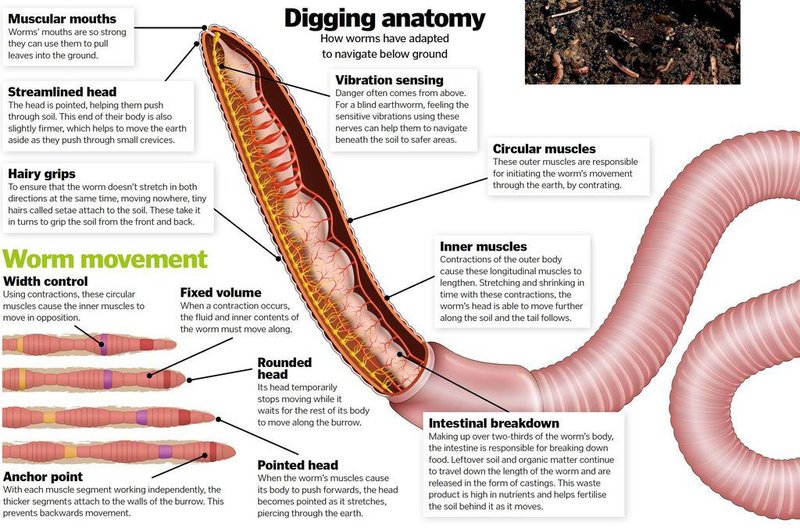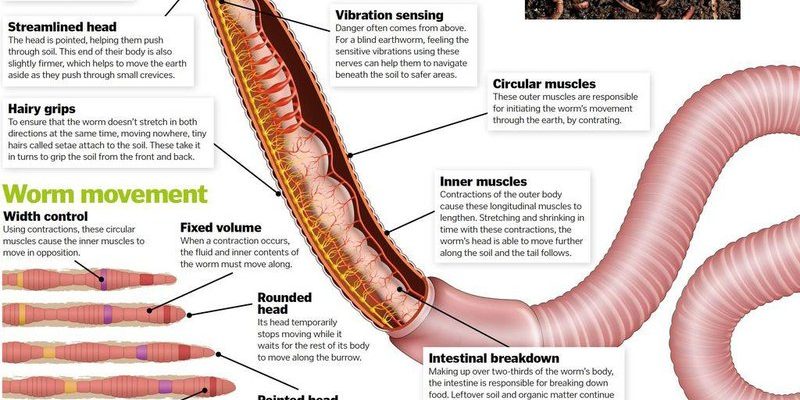
First off, think of red wigglers like tiny vacuum cleaners. Their job isn’t just to eat; it’s to process organic matter into something beneficial. They don’t have teeth like we do. Instead, they use a specialized structure called a gizzard, which grinds up the food they consume. Picture a little mini blender operating inside their bodies! Understanding how they feed can not only help you appreciate these creatures more but also enhance your composting efforts if you’re a gardener or just someone interested in a sustainable lifestyle.
What Do Red Wigglers Eat?
Here’s the thing: red wigglers are not picky eaters! They thrive on a diet made up primarily of organic waste. This includes:
- Fruit and vegetable scraps
- Coffee grounds and filters
- Eggshells
- Shredded paper and cardboard
- Dead leaves
These worms love the process of breaking down these materials. But you might be wondering, can they eat anything? Well, they do have some dietary restrictions. For example, red wigglers shouldn’t eat meat, dairy, or oily foods as these can create unpleasant odors and attract pests.
When you toss something like a banana peel into your compost bin, the red wigglers will swarm to it, breaking it down piece by piece. The microorganisms in their gut help decompose the food, which is a cool symbiotic relationship worth noting. So, remember: the more variety you offer them, the healthier and more productive they’ll be.
How Do Red Wigglers Consume Food?
Now that you know what they eat, let’s dive into how they actually consume this food. When red wigglers find food, they take it in through their mouth, which is located at the front of their body. Here’s a simple breakdown of the process:
1. Ingestion: They swallow small pieces of organic matter. This act of ingestion helps them mix the food with the soil around them.
2. Digestion: Once the food is ingested, it moves into their gizzard. As mentioned earlier, this is where the real magic happens. The gizzard grinds the food into finer particles, making it easier for the worms to digest.
3. Absorption: After grinding, nutrients are absorbed through their skin as the food passes through their intestines. Here, beneficial bacteria continue breaking down the food, making it nutrient-rich.
Think of it like a mini factory inside their bodies! They take raw materials, process them, and produce nutrient-dense compost that enriches the soil. This is one reason why people love using red wigglers in composting systems; they help create a nutrient-rich product that benefits plants.
Why Is Their Feeding Mechanism Important?
Understanding the feeding mechanism of red wigglers is crucial for several reasons. For one, it helps gardeners like you optimize your composting methods. Here’s why you should care:
– Efficient Composting: By providing these worms with the right food, you can speed up the composting process. They break down organic matter faster than traditional composting methods.
– Soil Health: The compost produced by red wigglers is loaded with nutrients. This not only enhances soil fertility but also improves soil structure. Healthy soil leads to healthier plants!
– Waste Reduction: By composting food scraps with red wigglers, you’re reducing waste that would otherwise go to landfills. This helps lessen your environmental footprint.
Let’s put it this way: when you understand how red wigglers feed, you become a better composter. You’re making a positive impact on the environment, your garden, and ultimately, your plate.
Setting Up a Habitat for Red Wigglers
If you’re excited about incorporating red wigglers into your composting routine, setting up the right habitat is essential. Here are some key steps:
1. Choose the Right Container: You can use a worm bin made of plastic or wood. Make sure it has drainage holes and proper ventilation.
2. Prepare Bedding: Red wigglers thrive in moist bedding made from shredded paper, coconut coir, or cardboard. Aim for a damp but not soggy consistency.
3. Add Worms: Once your bedding is ready, it’s time to introduce the worms. Start with about 1 pound of red wigglers for every square foot of bedding.
4. Feeding Schedule: Feed them once a week with small amounts of kitchen scraps. Remember to chop up the food into smaller pieces to make it easier for them to consume.
By creating a suitable environment, you’ll keep your red wigglers happy and healthy, maximizing their composting potential.
Common Issues and Troubleshooting
Like any pet or garden companion, red wigglers can face problems. Here are some common issues and how to troubleshoot them:
– Odor Problems: If your worm bin smells, it might be due to overfeeding or too much moisture. Reduce the food intake and aerate the bedding by turning it with a garden fork.
– Pest Invasions: Fruit flies or other pests can show up if you’re not careful. Cover the food scraps with bedding, and avoid adding meat or dairy.
– Worm Escapees: Sometimes, worms try to escape if the environment is too hot, dry, or overcrowded. Make sure to keep conditions optimal by checking moisture levels and the balance of food scraps.
Don’t worry if things don’t go perfectly at first. Composting with red wigglers is a learning process. As you get to know their needs, you’ll create a thriving ecosystem right in your backyard.
The Bottom Line: Get to Know Your Red Wigglers
Understanding the feeding mechanism of red wigglers isn’t just about knowing how they eat; it’s about appreciating their role in our ecosystem. By learning how to properly care for them, you’re not only enhancing your composting skills but also contributing to a healthier planet.
So, next time you toss kitchen scraps into your worm bin, think of the amazing mini factory at work inside those little creatures. Happy composting, and may your garden flourish with the help of your red wiggler friends!

